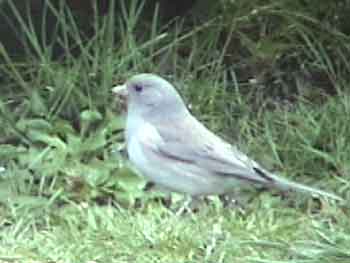Plumage
One of the first things to note about the bird is its plumage. There are various types of plumages for various reasons.
Camouflage or Cryptic
Camouflage plumage helps birds blend into their surroundings and helps avoid predators. Predators also wear camouflaged plumage so they can blend in and use surprise attacks.
Shadows or silhouettes are very conspicuous so birds squat and remain motionless to avoid possible attack from a predator; for example, you don't see the Killdeer or Brown Creeper unless they move.
Conspicuous or Phaneric
In some species, bright, striking colors are used for courtship and attracting a mate. The most brilliant display tells the female that the male is in good condition and one likely to produce healthy offspring. The down side to the bright colors is that it makes him more visible to predators.
In spring, hormones from the pituitary gland trigger the intensity of color. In fall, the intensity of color gradually diminishes. A good example of this color change is the American Goldfinch. During breeding, he wears his best suit of yellow and black. However, during the winter, he is drab looking and is often mistaken for a Pine Siskin because he doesn't have his conspicuous coloring.
Breast Spots or Streaks
Observing breast spots or streaks help in identification. For example, the sparrow family can be separated into two smaller groups based on whether or not the breast is streaked.
Birds of a Different Feather
Birds with atypical coloration generally have a harder time finding a mate and are frequently harassed by their own kind.
Albinism
Albinism is the lack of the pigment melanin. Melanin provides the color brown and various shades thereof. Total albinism in wild birds is very rare. Birds exhibiting complete albinism have entirely white plumage, pink eyes, and pink/pinkish body parts that are not covered by feathers. Albinos typically have poor eyesight and it's difficult for them to forage. The lack of pigments in the feathers makes them brittle and they wear out more quickly, flight is often inhibited, and a white bird is easier for a predator to find.
For more information, the Royal Society for the Protection of Birds has an article on albinism and other abnormal feather coloring.
Partial Albinism

Birds with anything from a few to many white feathers in their plumage are called partial albinos. Birds with large amounts of white are the result of a genetic flaw in both male and female. The reason they remain rare is that both parents must carry the genes responsible for the white plumage.
Leucistic

The third color aberration consists of a general overall paleness. It is as if the bird has been bleached all over so that although the main patterns on the plumage are visible, everything is faded. Go to and read leucistic and other color variants for more information.
Melanism
Melanism is excess of black or brown pigment. It occurs regularly in some species of hawks resulting in dark or melanistic forms.
